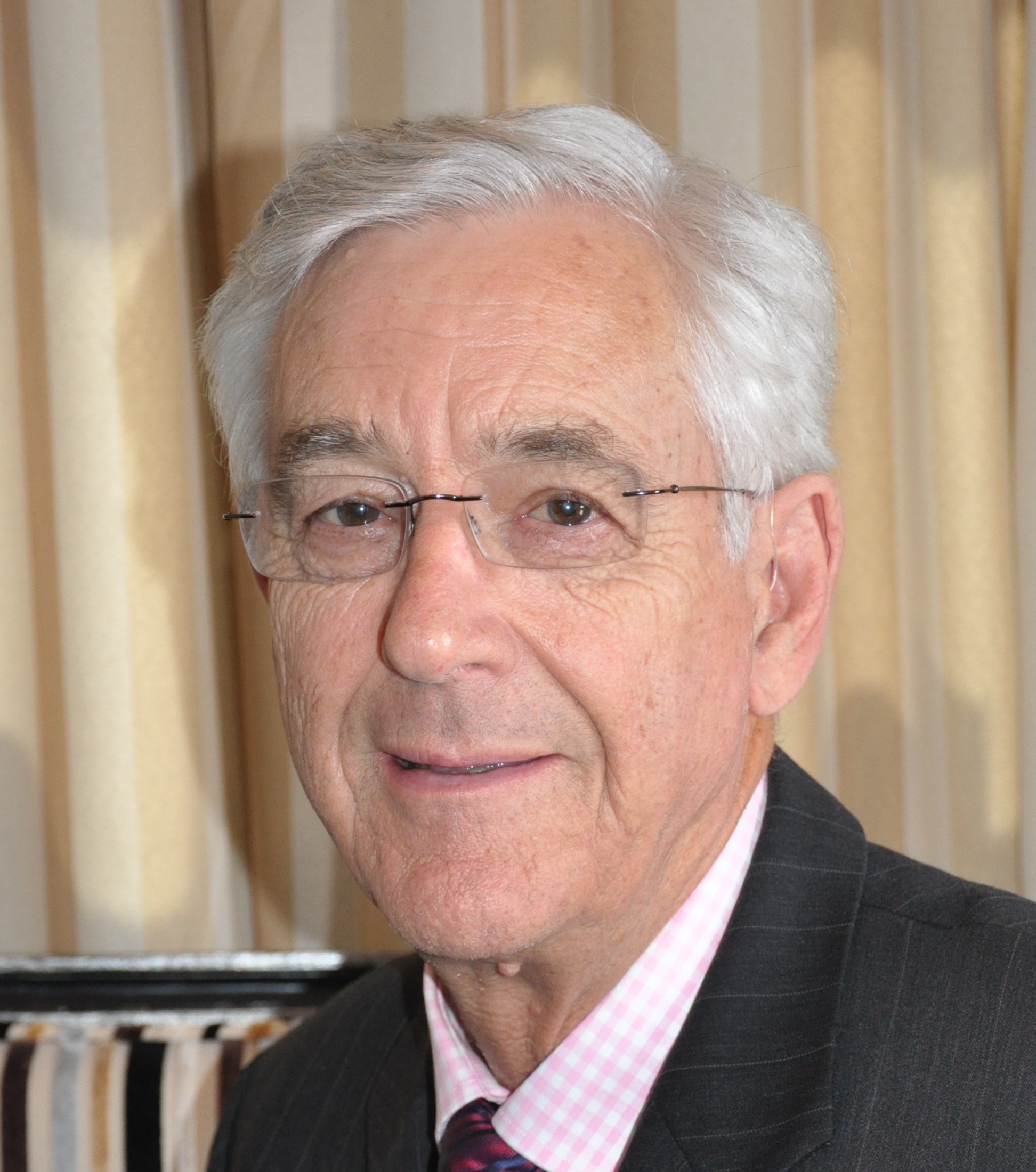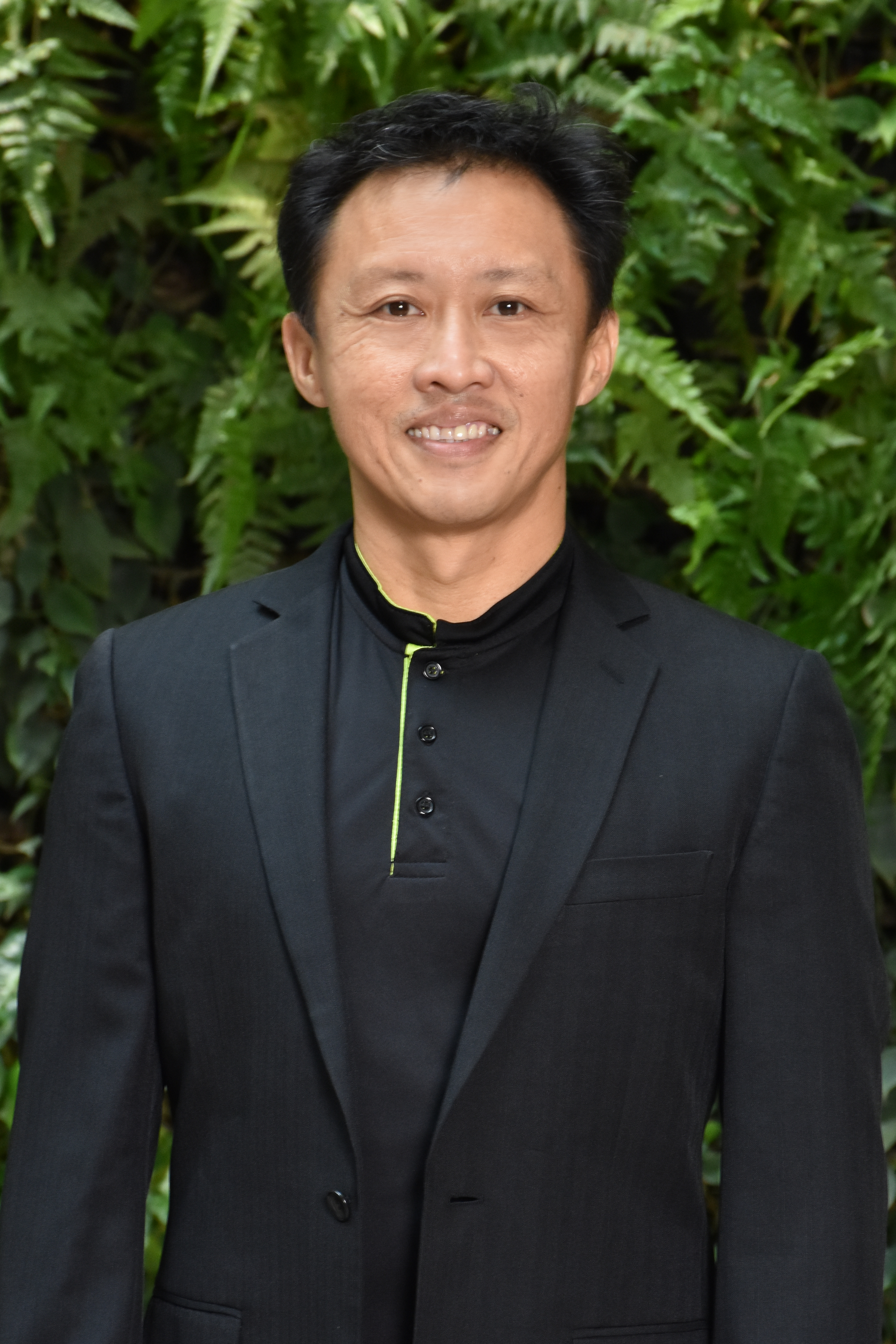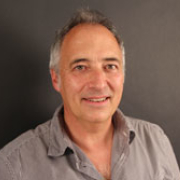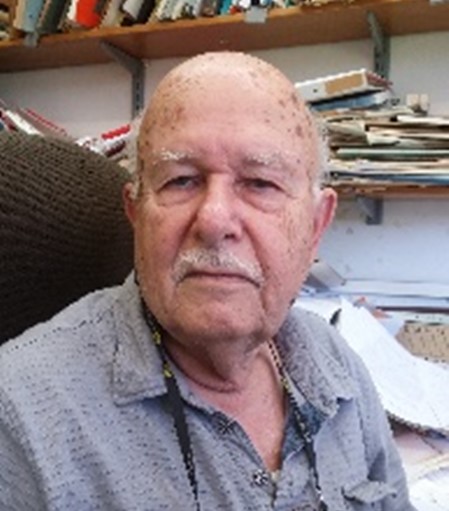Keynote Speakers
Prof. John Trinder
Emeritus ProfessorSchool of Civil and Environmental Engineering
The University of New South Wales (UNSW Sydney)
Australia
Speech Title: Remote Sensing for Ecosystem Services and Urban Sustainability
Abstract: Sustainable development and urban sustainability will be described in the presentation, followed by demonstrations of the need for green spaces in cities, and the consequences of fragmentation of green spaces on biodiversity. While cities will continue to exist because of the increases in population around the world, said to reach about 8.5 billion by 2030, proposed desirable minimum green cover are recommended to be of the order of 15% to 20% in CBDs and industrial areas, 25% to 30% in residential and light commercial areas, and up to 50% in suburban areas.
Ecosystem Services (ES) are those services provided by the natural environment and properly functioning ecosystems, for the benefit of humans. They demonstrate the extent of dependence of humans on the natural environment. ES are represented by flows of material, energy and information from natural capital stocks, which combine with manufactured and human capital services to produce human welfare. Expressed another way, human well-being is dependent on interactions between built, social, human and natural capital.
The presentation proposes that assessment of ecosystem services (ES) should be used as a basis for sustainability of urban areas. It will demonstrate how researchers have used geospatial technologies, especially remote sensing, to define ecosystem services (ES) for urban environments and therefore that sustainability of urban areas can be based on the evaluation of demand and supply of ecosystem services.
Recently ES have been listed into four major categories: provisioning, regulating, cultural and amenity service, and supporting and habitat services, describe as follows:
* Provisioning services include material products obtained from ecosystems, including food, fibre, fresh water and genetic resources.
* Regulating services are benefits including regulation of climate, water, pollination and some human diseases.
* Cultural services are the non-material benefits obtained from ecosystems through spiritual enrichment, cognitive development, reflection, recreation, and aesthetic experience, as well as their role in supporting knowledge systems, social relations, and aesthetic values.
* Supporting and habitat services are those that are necessary for all other ES, such as biomass production, nutrient cycling, water cycling, provisioning of habitat for species, maintenance of genetic pools and evolutionary processes.
The supply of ES refers to the capacity of a region to supply a service, and demand for ES is the amount actually consumed. Therefore, these two services are combined to form the ecosystem footprint, which is the area needed to generate the ES required by a certain region in a timeframe. The applications of remote sensing technologies for determining supply and demand of ES have been demonstrated by several researchers, while it is recognized that access to remote sensing data at a range of resolutions, as well as volunteer collection of data will be required to achieve rapid compilation of ES. There have been rapid advances in earth observation technologies recently, that enable the collection of data on the terrain surface, and characteristics of land use/land cover. There are therefore likely to be improved satellite data available to determine more detailed estimates of supply and demand of ES in future.
Keywords: Sustainable development, Urbanization, Remote sensing, Ecosystem Services, Natural capital.
Biography: John Trinder was employed at the University of NSW, Australia, from 1965-1999, progressing to Professor and Head of the School from 1990-1999. He currently holds the position of Emeritus Professor in the School of Civil and Environmental Engineering at the University of NSW. He was elected Honorary Fellow of UNSW in 2013. He was President (2000-2004) of the International Society for Photogrammetry and Remote Sensing (ISPRS) and is currently an Honorary Member. John has undertaken teaching and research at UNSW for more than 55 years, specialising in Photogrammetry and Remote Sensing and spatial information. He maintains an interest in these areas, and their contributions to studying environmental impacts.
Assoc. Prof. Harn Wei Kua
Associate Professor of Sustainable Building MaterialsNational University of Singapore
Singapore
Speech Title: BIOCHAR AS A SUSTAINABLE BUILDING MATERIAL – LESSONS AND THE WAY AHEAD
Abstract: Biochar is well known as a sustainable and, possibly, carbon-negative material. Widely popular as a soil remediation agent and pollutant adsorbent, the use of biochar’s physical properties to enhance concrete’s chemical and physical processes has a relatively short history.
In the last 9 years, much advances have been made in this field. This talk aims to provide audience an interesting and accessible account of the major developmental milestones in the short history of biochar concrete and biochar cementitious materials. The sustainability benefits of different types of biochar concrete will also be highlighted against a background of novel findings on how various carbon-sequestering properties of biochar, for example, the pore surface fractal dimensions, can determine the density of pores that participate in the carbon capture process.
Biography: Harn Wei Kua is Associate Professor of Sustainable Building Materials at the National University of Singapore. He earned his PhD from the Building Technology Program, Massachusetts Institute of Technology (MIT). His research specializes in upcycling of waste into high performance sustainable building materials; his current focus is on the use of biochar as a partial replacement for sand and/or cement in concrete, while improving the mechanical and hygroscopic properties of concrete. He also specializes in sustainability assessment of building materials – he creates and applies life cycle sustainability assessment and Circular Economy methods to evaluate building materials and strategies of recycling waste into building materials.
Harn Wei Kua is Associate Editor of Critical Review in Environmental Science and Technology (IF: 8.302) and Energy and Environment (IF: 1.775). He is also the University’s Thrust Lead for construction 3D printing and the lead for the Smart Materials Laboratory of the Department of Building. To date, he has won numerous academic awards and honors, including the MIT Carroll L. Wilson Award, and he has been invited to deliver more than 70 speeches in local and international conferences, seminars and summer schools.
Prof. Laurent CHARLET
Institute of Earth Science (ISTerre-OSUG UMR 5275)University Grenoble Alpes
France
Speech Title: On−Off Mobilization of contaminants in phosphogypsum waste during redox oscillations, and contaminant removal using steel industry magnetite by-product
Abstract: The phosphate fertilizer industry is responsible for the stack-piling of Highly-polluted and acidic phosphogypsum (PG) wastes all over the Mediterranean shore (Lebanon, Cyprus, Spain) and elsewhere. They are usually exposed to weathering conditions and contain high amounts of heavy metals, metalloids and radionuclides (Zn, Cd, Pb, Cr, Ni, As, Sb and U). In the present study, we focus on PG wastes disposed directly on the salt marsh soil of the Tinto River estuary (Huelva, Spain). In such estuarine systems, variable redox conditions imposed by tide cycles may lead to sulfide precipitation and thus, to natural attenuation of the contaminants. The behavior of these contaminants was evaluated on the PG and the marsh basement , separately, using reactors with controlled experimentally-induced oscillating redox conditions. Chemically induced cycles of oxidation and reduction were achieved via a combination of gas (N2:CO2 vs compressed air) and carbon (ethanol) addition, to stimulate the metabolism of a natively present microbial community. The results revealed that Fe, and to a lesser extent S, control most precipitation/dissolution processes. Ferric iron precipitates in the form of phosphates and oxyhydroxides, while metal sulfide precipitation is insignificant and appears to be prevented by the abundant formation of Fe phosphates. An antagonistic evolution with changing redox conditions was observed for the remaining contaminants (i.e. Zn, As, Cd and U) which remained mobile in solution for most of the time during the experimental run while. similar experiments on phosphate poor subsurface materials have shown clear on−off switch mobility behavior for both major elements (i.e. carbon (C), iron (Fe) and manganese (Mn)), and contaminants. Manganese, Fe, and As were mobilized under anoxic conditions, whereas Sb, Se, and U were mobilized under oxic conditions. While As, Sb, and U were reversibly sorbed, Se and Cr were irreversibly sequestered via reductive precipitation. When present in aqueous solutions at high concentrations, CrVI prevented the reduction of Mn and Fe, and inhibited the mobilization of elements with lower EH°. Comparison of phosphate-poor and phosphate rich systems demonstrate that high concentrations of phosphates inhibit the typical processes of immobilization of pollutants in saltmarshes which highlights the elevated contaminant potential of phosphogypsum wastes on coastal environments. To improve remediation strategies for multiple contaminants in redox-dynamic environments, we propose a mixed kinetic-equilibrium biogeochemical model that can be forced by oscillating boundary conditions and that uses literature rates and constants to capture the key processes responsible for the mobilization of contaminants in soils. Since the most problematic contaminants are redox active (U, Cr, As, Sb, Se) we further investigated their removal via magnetite surface reductive immobilization. Two types of magnetite were compared: a pure lab made nanoparticulate magnetite, and a nano-magnetite produced by the startup Hymag’in using steel industry waste material. The approach demonstrates a possible industrial waste material virtuous life cycle.
Keywords: Phosphogypsum; estuarine salt-marshes; redox oscillations; nanomagnetite; contaminants’ retention
Biography: Laurent Charlet is Professor of Water Bio-Geochemistry and Nanotoxicology at the University of Grenoble, France. He earned his PhD at the University of California, Riverside (advisor: Prof. Sposito) and performed postdoctoral research in Switzerland at EAWAG (within Prof. Stumm group) and at the University of Bern (within Prof. Schindler group). He studies the fate of metalloids (As, Se, Sb..), organics (antibiotics, prions), radionuclides and nanoparticles in natural media and in the human body. He investigates the influence of bio-geo-chemical processes on the mobility, bioavailability, biotransformation and chemical speciation of these compounds in cells and natural waters under varying redox conditions, from the molecular scale to the field. His group maintains a modern trace element analysis, surface chemistry and cell culture laboratory and makes use in several project of synchrotron X-ray techniques (µXAS, µXRF), Neutron scattering and Mössbauer spectroscopy. Laurent Charlet is co-Editor-in-Chief of Journal of Hydrology, was elected member of CNRS national committee Section 30, and Head of the Environmental Toxicology Facility, Rovaltain, France International Scientific Committee.
Prof. Shlomo Nir
Professor EmeritusThe Hebrew University of Jerusalem (HUJI)
Israel
Speech Title: Water purification from bacteria, cyanobacteria, and toxins by filtration and biocidal free cations: modeling of filtration and degradation during filtration
Abstract: Removal of pathogenic microorganisms by filtration provides safe water, and reduces harmful disinfection by products. Ordinary micelle-clay complexes have a relatively large surface area, large hydrophobic fractions, and are positively charged to half of the cation exchange capacity of the clay. Granulated micelle-clay composites (0.4 to 2mm) formed by organic cations, e.g., ODTMA (Octadecyltrimethylammonium), have the capacity to remove from water by filtration a wide array of microbial contaminants: (a) Escherichia coli S-17; (b) total bacteria count (TBC); and (c) Cyanobacteria (Microcystis and Aphanizomenon). Filters included the complex exclusively, or mixed with sand. A model which considered convection, adsorption, and desorption simulated the filtration results and yielded predictions. Calculated capacities (emerging bacteria <1 per 100 mL) were (for a 1m long filter at a flow velocity of 10 m/h) 5 to 100 m3/ kg of complex for water including 5∙106 to 1∙103 E. coli bacteria/mL, respectively. Regeneration of used filters was by: (i) dilute solutions of NaOCl, or HCl, or (ii) heating in a furnace or (iii) by microwave radiation, which gave the best results. Removal capacity of TBC was smaller than in (a), but the technology enables to avoid using UV lamps in domestic filters. Bacteria capture by filtration was shown to be more efficient, due to biocidal/ biostatic effects of released cations. Placing a layer of activated carbon after the micelle-clay filter reduced the released cations to 1µg/L. A newly designed enriched complex with a larger ODTMA load to utilize both filtration and biocidal/biostatic activity of free cations, yielded enhanced capacity in removal of bacteria from water. Free ODTMA cations at concentrations of 30 and 90 mg/L at 5 min contact imposed full inhibition of the photosynthetic activity in cultures of Aphanizomenon and Microcystis, respectively, whereas for 20 min incubation, complete killing of these cells occurred at cation concentrations of 80 µg/L and 6 mg/L, respectively. Filtration of cyanobacteria was efficient and was adequately modelled. The estimated capacity of a 1m long filter (flow velocity 6m/h) to purify water, which includes 106 Microcystis cells per mL to drinking standards is 22 m3/ kg of complex. The calculation assumed 10-fold reduction in cell number by a first step of coagulation/sedimentation. The capacity of ODTMA nano-composite to remove cyanotoxins, microcystins (MCs) from water to below 1 µg/L via filtration was determined. Higher capacities were observed for the removal of MC-LR, MC-WR, MC-3aspWR and MC-Y, whereas substantially lower capacities were recorded for more positively charged MC congeners, such as MC-RR and MC-3aspRR. Filtration results were simulated by the filtration model, for solutions including one to several toxins. In agreement with model predictions, results demonstrated that in the presence of MC-WR the emerging concentrations of MC-RR congeners eventually exceed their solution values. In conclusion, nano-composites of ODTMA-bentonite can be applied for removal of bacteria, cyanobacteria and cyanotoxins, microcystins from drinking water. Cyanotoxins and off flavour molecules were observed to be efficiently removed from water by a process of bacterial degradation during filtration. A model developed yielded good predictions for experimental results. The model predicts an establishment of a steady state.
Keywords: Nano-composite; Granulated micelle-clay; Filtration modeling; Removal of bacteria; Biocidal effects; Cyanotoxins; Microcystins; Modeling filtration; Modeling degradation during filtration
Biography:
1969 Ph.D-Theoretical Physics.
1970 Fellow, Inst. Life Sciences,HUJI.
1970-1980. RPMI, Buffalo NY. Cancer Research Scientist I-IV, and Assoc. Prof. Biophysics; University of NY, Buffalo.
1980 Assoc. Prof. HUJI ; Dept Soil and water Sciences.
1985 Professor.
2003 Professor Emeritus.
Recent research mainly on Water Purification and teaches a graduate course. Developed models for:
1. Simultaneous adsorption of several inorganic and organic cations to surfaces, by accounting for electrostatic equations and specific binding in a closed system. The model has been applied to artificial and biological membranes and to clay-minerals.
2. Particle aggregation, extent and kinetics.
3. Membrane fusion and.endocytosis.
4. Pore formation by peptides.
5. Kinetics of filtration for a solution with several pollutants. The model has yielded simulations and predictions for removal of chemicals and bacteria for laboratory and pilot scales.
6. Filtration and degradation. The model, which predicts steady sate phenomena was recently applied in (i)removal from fish ponds of off flavor compounds and (ii) removal of bacteria. Designed a complex between organic cations and clay-minerals or clays, which has been efficient in removal of chemicals (mainly anionic and hydrophobic) and microorganisms, such as bacteria, viruses and a parasite, Cryptosporidium.
Guided 11 Ph.D and 15 M.Sc students.
Published 259 articles in peer reviewed scientific Journals and books, 4 books, 6 patents;
h-index 79.
List of speakers will be updated soon...




